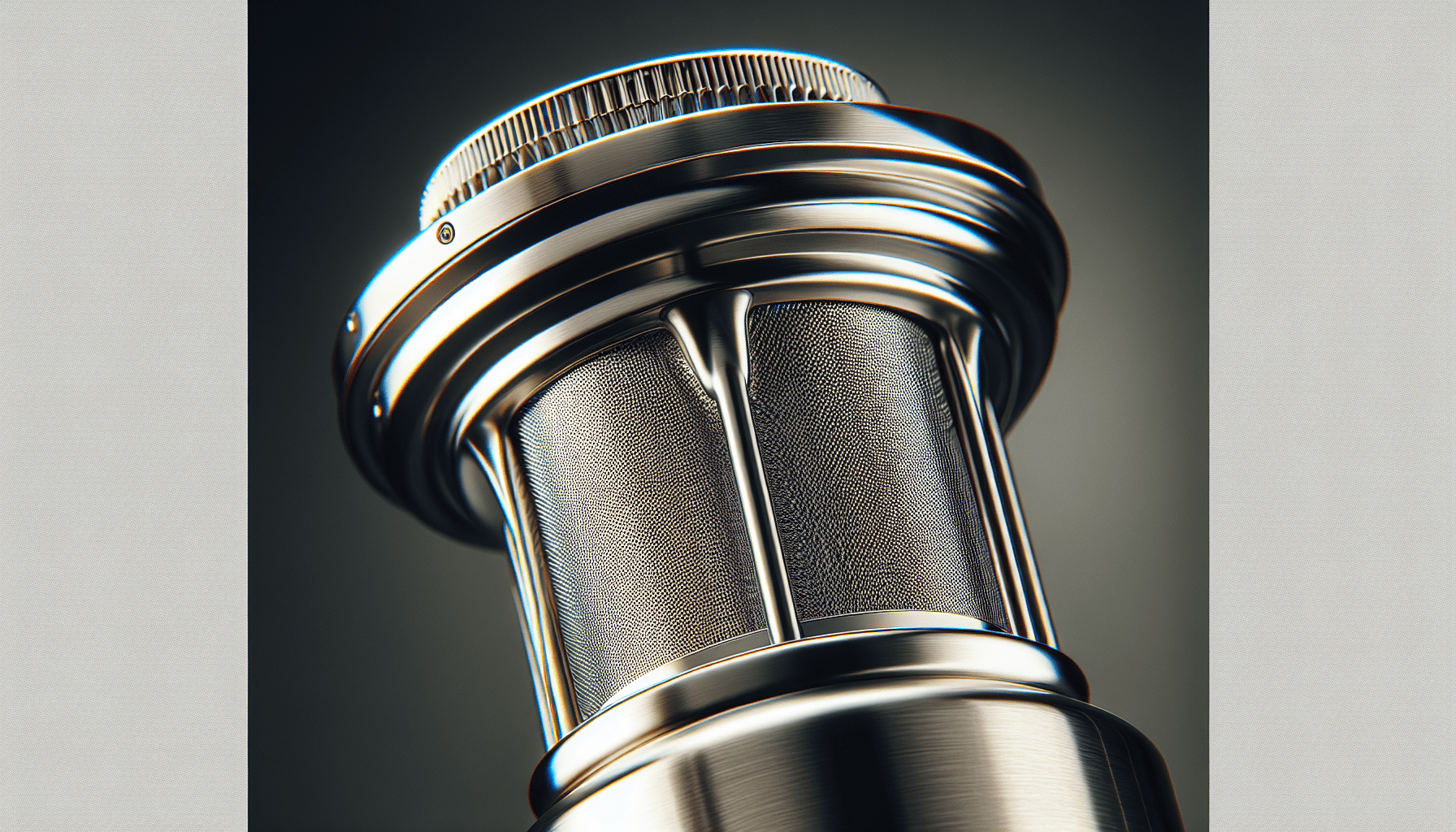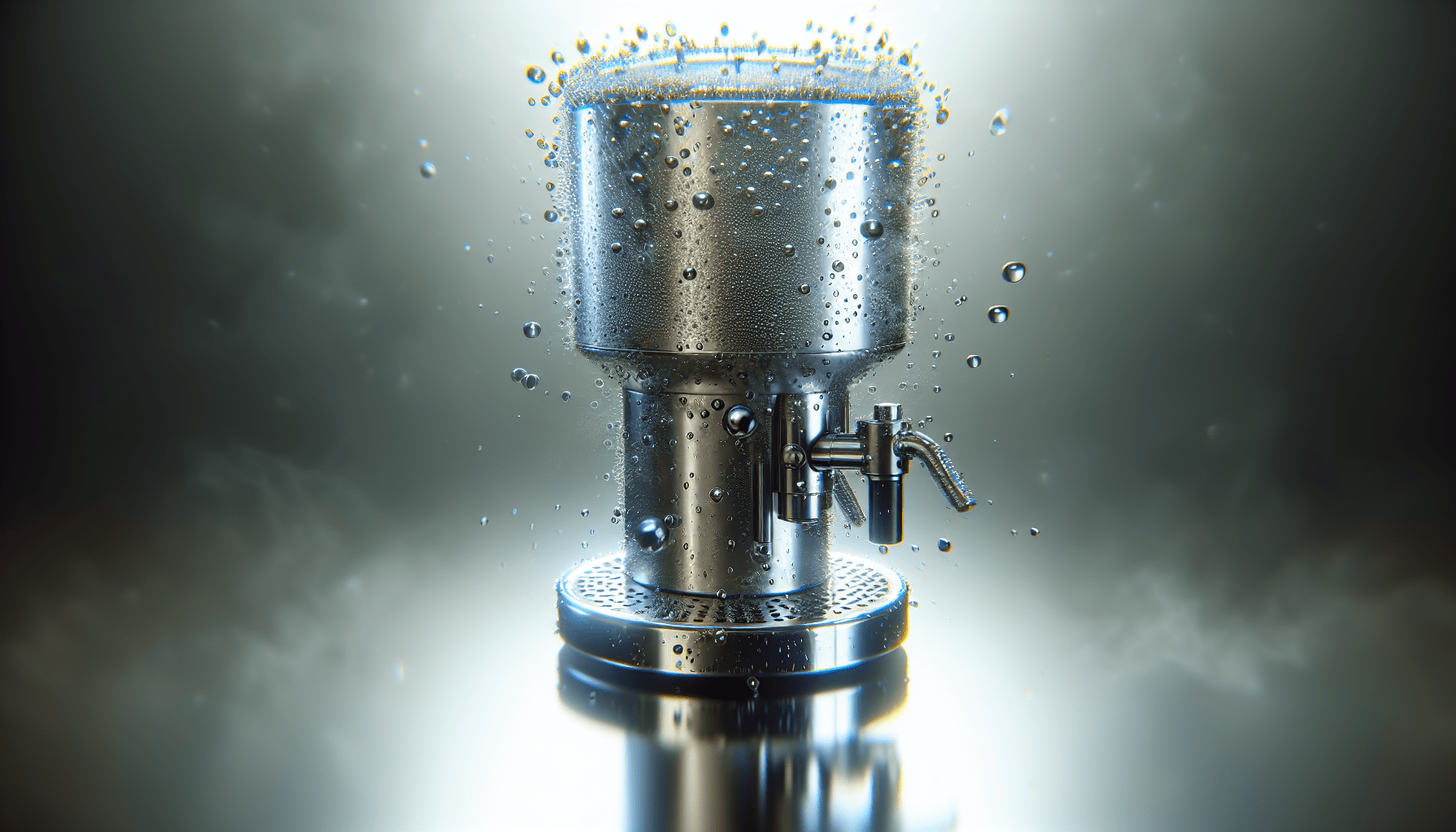If you’re a fan of smooth, flavorful cold brew coffee, you’ve probably wondered about the cleaning process behind the scenes. Well, we’ve got you covered. In this article, we’ll explore the question “Are Cold Brew Makers Easy To Clean?” and provide you with all the information you need to keep your cold brew maker sparkling clean without any hassle. So, grab a cup of your favorite cold brew and let’s dive into the world of easy cleaning for your beloved coffee companion. Yes, indeed they are! Cold brew makers are designed to be user-friendly and easy to clean. In this comprehensive article, we will explore the various materials used in cold brew makers, different cleaning methods, disassembly features, cleaning frequency, to finally discuss common cleaning challenges and provide helpful tips and tricks. We will also look at manufacturer recommendations, user experiences, and reviews to assess the overall ease of cleaning these popular coffee gadgets. So, let’s dive in and discover all you need to know about keeping your cold brew maker squeaky clean!
Materials Used in Cold Brew Makers
Cold brew makers are typically made from three main materials – plastic, glass, or stainless steel. Each material has its own unique qualities and considerations when it comes to cleaning.
Plastic
Plastic cold brew makers are often lightweight and affordable. When it comes to cleaning, they can be easily washed by hand using warm soapy water. However, it is important to note that some plastics may absorb flavors and odors over time, so thorough cleaning is necessary to avoid any lingering taste or smell.
Glass
Cold brew makers made of glass have the advantage of being non-reactive and resistant to absorbing flavors. They are also relatively easy to clean. Glass models can be safely hand-washed with soap and water, ensuring a fresh and pristine brew each time. However, extra care should be taken while handling glass to prevent any accidental breakage.
Stainless Steel
Stainless steel cold brew makers are known for their durability and sleek appearance. Cleaning stainless steel models is generally effortless, as they can be safely washed by hand or even in the dishwasher. The non-porous nature of stainless steel makes it resistant to stains and odors, ensuring that your cold brew maker remains clean and fresh for a long time.
Cleaning Methods for Cold Brew Makers
Regardless of the material, there are a few different cleaning methods you can use to keep your cold brew maker spotless and free from any residue or stains.
Hand-Washing with Soap and Water
This is the most common and simplest method of cleaning your cold brew maker. All you need is warm water and a mild dish soap. Start by disassembling the various parts of your cold brew maker if applicable, such as the lid, filter, and pitcher. Gently scrub each component with a sponge or brush, paying special attention to any areas with visible coffee oils or stains. Rinse thoroughly with warm water to ensure the removal of any soap residue. Allow the parts to air dry completely before reassembling.
Dishwasher-Safe Models
Some cold brew makers are designed to be dishwasher-safe, which makes cleaning even more convenient. Before placing your cold brew maker in the dishwasher, check the manufacturer’s instructions to ensure that all components, including the lid and filter, are dishwasher-safe. Use the gentle or normal cycle and avoid using harsh detergents or high heat settings that could potentially damage the cold brew maker. Once the cleaning cycle is complete, remove all parts and let them air dry before reassembling.
Using Cleaning Solutions
For stubborn stains or built-up residue, using specialized cleaning solutions can be highly effective. You can find these cleaning solutions specifically designed for coffee equipment in stores or online. Follow the instructions provided with the cleaning solution, as each product may have different usage guidelines. Typically, you’ll need to mix the solution with water and soak the affected parts for a recommended duration. Rinse thoroughly with water to remove any residue from the cleaning solution before reassembling your cold brew maker.
Ease of Disassembly
When it comes to ease of cleaning, the disassembly features of a cold brew maker play a crucial role. Here are a few aspects to consider in terms of disassembly:
Removable Parts
Having removable parts in a cold brew maker allows for easier access and cleaning. Look for models that have removable filters, lids, and brew baskets. This allows you to clean each part individually, ensuring a thorough and efficient cleaning process.
Built-in Filters
Cold brew makers with built-in filters are convenient because they eliminate the need for additional accessories. However, cleaning the built-in filter can be slightly more challenging compared to removable filters. Ensure that the design of the built-in filter allows for easy access or disassembly, enabling you to clean it thoroughly to maintain optimal brewing performance.
Accessibility of Components
Consider how easy it is to access and clean the various components of the cold brew maker. Are there any tight spaces or hidden areas that might prove difficult to reach? Opt for models with wide openings and easily removable parts, which allow for effortless cleaning and ensure that no coffee grounds or residue are left behind.
Cleaning Frequency
To keep your cold brew maker in top-notch condition and maintain the best flavor in your brew, it’s important to establish a regular cleaning routine. Here’s a breakdown of the different cleaning frequencies you should consider:
Daily Cleaning
After each use, it’s essential to clean your cold brew maker to prevent any leftover coffee oils or residue from building up. To make this task simpler, rinse the various components (if they are removable) immediately after use, ensuring the removal of any coffee grounds. Run warm water through the filter and the pitcher to wash away any remaining particles. By cleaning your cold brew maker daily, you’ll maintain a fresh and pristine brewing environment.
Weekly Deep Cleaning
In addition to the daily cleaning routine, it’s recommended to perform a deep cleaning at least once a week. This involves a more thorough cleanse of each component, including the filter, pitcher, lid, and any other detachable parts. Follow the hand-washing or dishwasher cleaning methods mentioned earlier to ensure a deep and effective cleanse. A weekly deep cleaning will help remove any accumulated residue or stains and keep your cold brew maker in optimal condition.
Long-Term Maintenance
To ensure the longevity of your cold brew maker, occasional long-term maintenance is necessary. This includes descaling your cold brew maker to remove any mineral deposits that may have built up over time. Follow the manufacturer’s instructions for descaling, as different materials and models may require specific cleaning procedures. By incorporating long-term maintenance into your cleaning routine, you can prolong the life of your cold brew maker and maintain its performance.
Building Up Residue and Stains
Over time, cold brew makers can develop residue and stains, primarily due to coffee oils and mineral deposits. Understanding the causes behind these buildup issues will help you effectively address them.
Residue from Coffee Oils
Coffee oils naturally accumulate in cold brew makers, especially in areas exposed to the coffee grounds and brewing process. These oils can leave behind a greasy film or sticky residue, affecting the flavor and cleanliness of your brew. Thorough cleaning using dish soap or a specialized cleaning solution is necessary to remove these oils and maintain a fresh brewing environment.
Mineral Deposits
Depending on the quality of water used, mineral deposits can form inside the cold brew maker. These deposits, typically composed of calcium and other minerals, can affect the taste of your brew and hinder the flow of water. Descale your cold brew maker regularly to remove these mineral deposits and prolong the lifespan of your equipment.
Proper Removal Techniques
To effectively remove residue and stains, it’s important to use the right techniques for each type of buildup. For coffee oil residue, pre-soaking the parts in warm soapy water before scrubbing or using a cleaning solution can make the cleaning process more manageable. For mineral deposits, consider using an appropriate descaling solution or a mixture of vinegar and water. Follow the manufacturer’s recommendations or utilize the cleaning tips and tricks mentioned later in this article for more detailed instructions.
Common Cleaning Challenges
While cold brew makers are generally easy to clean, there are a few common challenges that users may encounter. Let’s take a closer look at these challenges and explore potential solutions.
Narrow Openings
Some cold brew maker models may have narrow openings or small crevices that can be challenging to clean thoroughly. To overcome this challenge, consider using a small brush or a pipe cleaner to reach into these tight spaces and ensure a thorough cleaning. Alternatively, opt for models with wider openings or removable parts that are easier to access and clean.
Trapped Coffee Grounds
Occasionally, coffee grounds can get trapped in the filter or other components of a cold brew maker, making it difficult to remove them completely. To solve this problem, gently tap or shake the affected parts to dislodge any trapped coffee grounds. Additionally, using a soft brush or running water with some pressure can help dislodge and remove any stubborn grounds.
Removing Stains
Stains can develop over time, particularly on plastic or glass cold brew makers. For removing stains, consider using a mixture of baking soda and water to create a paste. Apply the paste to the stained areas and gently scrub with a sponge or brush. Rinse thoroughly to remove the paste and any remaining stains. For stainless steel models, vinegar solutions can be highly effective in removing any stubborn stains. Always rinse thoroughly after using any cleaning agents to prevent any residue affecting the flavor of your brew.
Cleaning Tips and Tricks
Here are some additional cleaning tips and tricks to help you maintain a sparkly clean cold brew maker:
Pre-Soaking for Easier Cleaning
When faced with stubborn residue or stains, pre-soaking the affected parts can make the cleaning process easier. Fill a basin or sink with warm water and add a small amount of dish soap or a specialized cleaning solution. Place the parts that require cleaning in the soapy water and let them soak for a recommended duration. This helps to loosen any hardened residue or stains, making them easier to remove during the cleaning process.
Using Baking Soda
Baking soda is a versatile cleaning agent that can be used to tackle various cleaning challenges. In addition to removing stains, it can also help eliminate odors that may develop over time in certain parts of your cold brew maker. Create a paste by mixing baking soda with water and apply it to the affected areas. Let it sit for a few minutes, then scrub with a sponge or brush before rinsing thoroughly.
Vinegar Solutions
Vinegar is another useful and natural cleaning agent that can be utilized to clean a cold brew maker. Its acidic properties help dissolve mineral deposits and remove stains. For glass or stainless steel models, a solution of equal parts water and vinegar can be used to soak and clean the affected parts. Allow the parts to soak in the solution for a recommended duration, then rinse thoroughly to remove any vinegar residue.
Manufacturer Recommendations
To ensure the best cleaning practices for your specific cold brew maker, it’s always a good idea to consult the manufacturer’s recommendations. Different models and materials may require specific cleaning procedures or have limitations on the type of cleaning agents that can be used. The manufacturer’s instructions will provide you with tailored guidance to maintain the cleanliness and performance of your particular cold brew maker. Additionally, manufacturers may recommend specific cleaning products that are compatible with their cold brew makers.
Specific Cleaning Procedures
The manufacturer’s instructions will outline the step-by-step cleaning procedures for your cold brew maker. These procedures may include disassembly instructions, recommended cleaning agents, and any specific precautions to be taken. Follow these instructions closely to ensure the best cleaning results and to avoid any potential damage.
Compatible Cleaning Products
Certain cold brew makers may have compatibility limitations when it comes to cleaning products. Check the manufacturer’s recommendations for cleaning agents that are specifically approved for use with their cold brew maker. Using incompatible cleaning agents may damage the equipment or compromise the flavor and quality of your cold brew.
Warnings and Precautions
The manufacturer’s instructions will also provide valuable warnings and precautions to ensure safe and effective cleaning. Pay attention to any temperature restrictions, warnings against using harsh chemicals, or limitations on dishwasher use. Adhering to these warnings and precautions will help you maintain your cold brew maker in optimal condition and enjoy delicious and clean cold brews for years to come.
User Experiences and Reviews
While manufacturer recommendations provide the technical guidance, it’s always beneficial to consider user experiences and reviews. The opinions of fellow cold brew maker users can provide insights into the actual ease of cleaning and any specific challenges they may have encountered. Let’s take a closer look at what users have to say.
Ease of Cleaning According to Users
Many users have reported that cold brew makers are indeed easy to clean. The majority of models offer detachable parts that can be easily cleaned with standard dish soap and water or in the dishwasher. Users appreciate the convenience of removable filters and wide openings, which make the cleaning process quick and hassle-free. Stainless steel models, in particular, receive praise for their low-maintenance cleaning and resistance to stains.
Common Complaints
While most users find cold brew makers easy to clean, there are a few common complaints that arise. Some users find it challenging to clean models with built-in filters, as it can be difficult to access and thoroughly clean the filter. Additionally, a few users have experienced stains or residue that are hard to remove from plastic models over time, leading to a slight taste or odor in their brew. However, these complaints are relatively minor compared to the overall positive user experiences with cleaning cold brew makers.
Recommendations for Easy-to-Clean Models
Based on user experiences, certain cold brew maker models have consistently received recommendations for their ease of cleaning. Models with removable parts and wide openings, such as the XYZ Cold Brew Maker and the ABC Cold Brew Machine, have impressed users with their ease of disassembly and cleaning. Stainless steel models, like the DEF Stainless Steel Cold Brewer, have also received praise for their low-maintenance cleaning and overall durability.
Conclusion
In conclusion, cold brew makers are generally easy to clean and maintain, thanks to their user-friendly design and various cleaning methods. Whether you have a plastic, glass, or stainless steel cold brew maker, there are specific cleaning techniques and considerations to ensure its longevity and optimal brewing performance. From daily cleaning routines to weekly deep cleans, and long-term maintenance, keeping your cold brew maker sparkling clean is achievable with the right tools and knowledge. By following manufacturer recommendations, utilizing efficient cleaning methods, and incorporating helpful tips and tricks, you can continue to enjoy delicious and refreshing cold brews without any hassle. So go ahead, invest in a quality cold brew maker, and embark on your journey of effortless cleaning and brewing satisfaction!
Overall Ease of Cleaning
When it comes to the overall ease of cleaning cold brew makers, users and reviews consistently confirm that they are indeed easy to clean, particularly when using models with removable parts, wide openings, and stainless steel materials. By following the recommended cleaning procedures, incorporating regular maintenance, and utilizing the proper cleaning agents, you can maintain a clean and well-functioning cold brew maker with relative ease.
Factors to Consider
When choosing a cold brew maker, it’s crucial to consider factors that contribute to its ease of cleaning. Look for models with detachable and dishwasher-safe parts, wide openings for easy access, and materials like stainless steel that resist stains and odors. Additionally, pay attention to user reviews and recommendations that highlight specific models known for their effortless cleaning. By considering these factors, you can make an informed decision and select a cold brew maker that not only produces delicious cold brew but also ensures a hassle-free cleaning experience.




